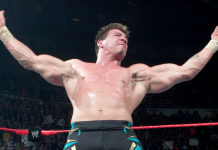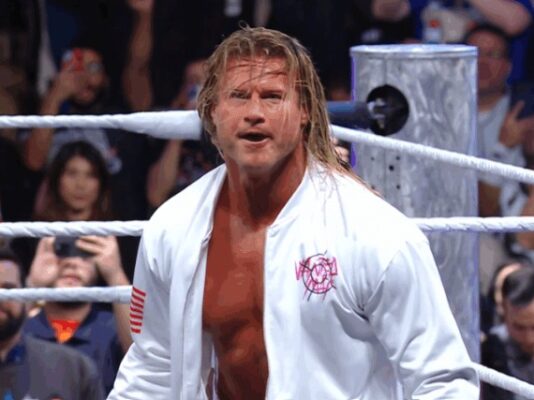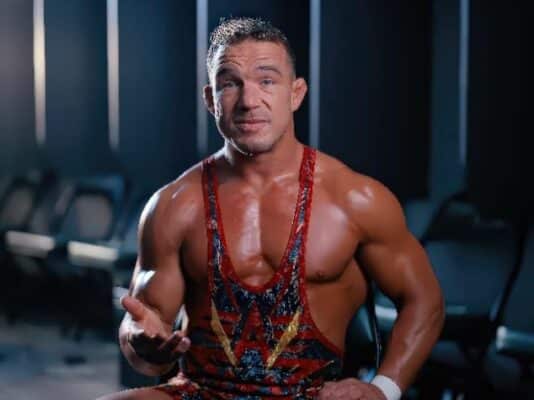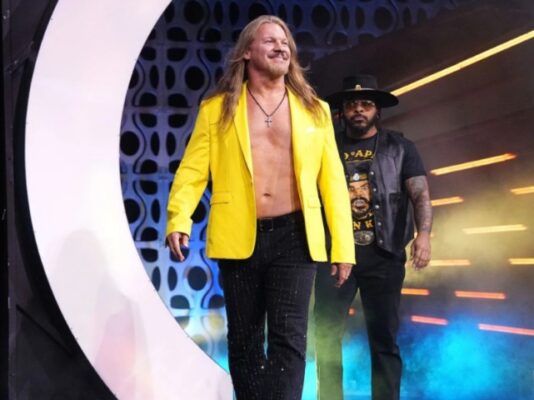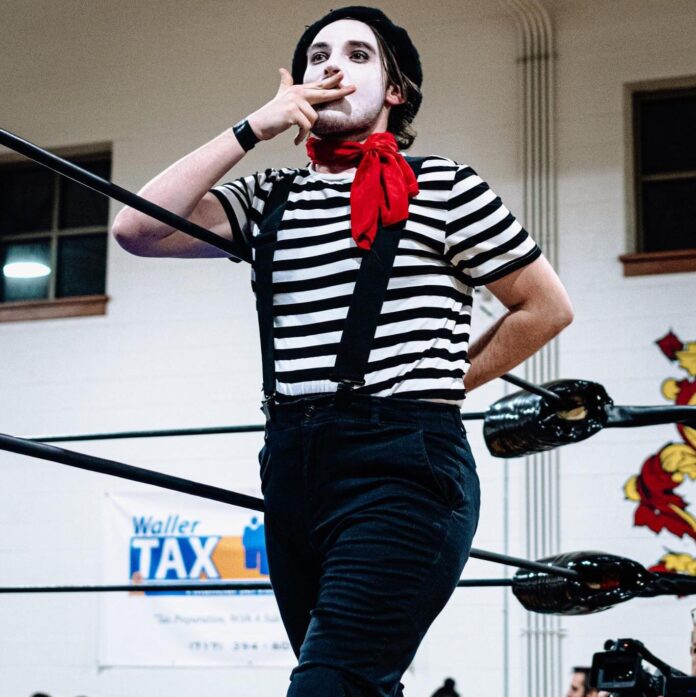
“It was never matter of if I was going to wrestle, but when.”
Professional wrestling has been called many things since it’s inception more than century ago. A spectacle, sleazy, thrilling, carny, incredible, awe-inspiring, disappointing, and amazing just to name a few. With as much debate and the many forms that sports entertainment can take, there’s one term that might describe it in its purest form, theater.
The dramatic clash between heroes and villains takes the live audience on a ride of peaks and valleys before the narrative hits its crescendo on its way to a resolution. The literal canvas of the squared circle is the stage for the art form to be put on display. Epic victories, tragedies, love stories, and violent conflicts can all play out within the course of a professional wrestling event the same way that it unfolds before the curtain lowers on the stage.
For Logan Blackhart, a youngster that has become a standout performer in the mid west within the past few years, the professional wrestling business became somewhat of a family business, as his father, stalwart of the Ohio independent scene, Ripper Blackhart became involved with the WAR Wrestling organization more than two decades ago when his son was just a toddler.
“After their third event, three friends of mine and I became part owners after the original partnership dissolved,” Ripper commented.
Over the next 22 years, Ripper wore virtually every hat possible for the promotion, as he did everything from tear tickets, hang up poster, security, merch tables, ring crew, work as a manager at ringside, an interviewer for DVD releases, a color commentator for their local television deal, and assist with the writing of events. His years of knowledge as well as the decades of experience are put to use today through his role as head organizer behind the scenes for the promotion. On-screen, the Ripper Blackhart persona remains a fixture of WAR as an authority figure, and he’s also the commissioner of the West Virginia-based Victory Championship Wrestling.
“So growing up, he was always involved. I always went to WAR shows and when I got a little older, I went to a shows around Fort Wayne and Akron,” Logan explained.
For the father and son duo, professional wrestling became a way of life, as the two zigzagged all over the Buckeye state on any given weekend. Given that Logan had literally grown up around wrestling rings and merch tables, Ripper knew that it was a foregone conclusion that the second generation Blackhart would want to set into the squared circle one day. Working in a factory most of his life, as well as knowing how tough of a business sports entertainment can be on the mind and the body, Ripper insisted that his son attend college first to give himself as many real-world career options as possible by the time he reach adulthood.
Unfortunately, real life had other plans, as professional wrestling wasn’t just the way of life mentioned earlier, but became a critical lifeline when Logan was still in high school.
“While still in high school, he had a major bout of depression, leading to him trying to take his life on more than one occasion. One of his counselors said one of the constant things he talked about was pro wrestling and asked if this was a possibility for him. He grew up around it, he’s been around it since he was three or four years old. At this time, he was 15 years old. So, I begrudgingly called my friend Cody Hawk, who had a school in between Dayton and Cincinnati,” Ripper explained.
Cody Hawk, an associate of the legendary Les Thachter’s Heartland Wrestling Association, is known as one of the most accomplished trainers of the modern era, teaching former world champions such as Jon Moxley and Sami Callihan during their formative years in the sport. For just over a year and a half, Ripper would drive young Logan two hours to Hawk’s training school for a two-hour training session and then drive the two hours back home twice a week.
“Logan was a great kid. He trained with me when he was about 15, I think. He had no gimmick or character, that came later. We had to build confidence first,” Cody Hawk remarked.
Finally, after the tedious process of learning how to land on the canvas safely, practicing the sequences of technical maneuvers, and numerous four-hour round trips to Cody Hawk’s school, it was time for Logan’s official pro wrestling debut in 2016.
At just 16, Logan entered a battle royal on a Cody Hawk spot show, a debut that he looks back on with a comical lens, as opposed to the bundle of nervous energy that he was that day. He wore a plain black singlet, a Gene Simmons lucha mask with a blonde ponytail sewn into it to peek out of the back of it to camouflage his age, and plain boots.
“The match itself was nothing special: some strikes, jaw-jacking with the fans, and over the top,” Logan recalled.
Sure, the mask of the Kiss singer was two sizes too big, the singlet was as generic as could be, and his time inside the ring was brief, but Logan had broken into the sport that he admired nearly his entire life, a goal that almost wasn’t possible just a few years earlier.
With that, Logan set out to cut his teeth in the industry, working as many shows as he could alongside his dad, and honing his craft as a performer. As time passed, he developed solid fundamentals and began to become more confident in his ability as a performer. Even today, with ten years experience under his belt, he still trains regularly at the Unchained Wrestling Academy to continue to polish his skills.
“I think working the shows together at first was kind of like him having training wheels. Although he grew up around it, he was never in the locker room so I think it helped him to navigate his way through things and the fact that if he needed something I was there, helped. Now that he’s been doing this for over 10 years, it’s been nice seeing him go out on his own and make his own name,” said Ripper.
However, as with most things that organically become successful in sports entertainment, in more recent years, Logan found the biggest upswing of his career so far by pure accident. He had a pair of events to wrestle at on a particular weekend, and on the Friday presentation, Logan had verbal sparred with the crowd so much that he legitimately lost his voice, leaving him speechless for his match the next day. When someone in the locker room jokingly mentioned a Mime character would give Logan an excuse not to use what was left of his fragile voice, longtime veteran, Matt Taylor advised that it would actually work, which prompted Logan to give the French-inspired persona a try at the event.
“It sounded nice to me because my voice was so shot that it genuinely hurt to talk. I took the name from Jean-Paul Satre and the Les Misérable musical. When you can’t talk, you have to make everything else you do bigger. You got to emote with your whole body and exaggerate your facial expressions. When pantomiming, you gotta do everything you can to make people understand whatever invisible thing you have in your hands. I’ve learnt there are simple things that go a long way to add clarity,” Logan explained.
Jean Paul was a hit with audiences and has become a staple of not only the Ohio circuit, but a cult favorite in Victory Championship Wrestling as well. In fact, it took only a handful of appearances in VCW before the “miserable mime” became a crowd favorite. In a genre where almost everything is copied, borrowed, or reinvented, Logan brought an original character to the table, which makes him a memorable part of any event where he competes in the ring.
But, the theatrics that made the character work so well in the squared circle weren’t just by chance. Instead, it was a clever application of lessons that Logan learned outside of the ring when he pursued higher education.
“I studied literature, creative writing, and theater in college and I think that all three of those things relate to pro wrestling. I also love psychology and philosophy. There’s a great essay by a French philosopher from the 70s about pro wrestling and when reading it in the present, you really get a sense of the universal foundations of the art form as well as its timelessness.”
“As I look at him now, he’s become an out standing entertainer. He’s grown so much since those times years ago in a dirty warehouse. A solid character, adding depth to any roster. Logan was one of my favorite kids and I’m so proud the wrestler he turned into, added Cody Hawk.
Clad in the classic mime attire of a french beret, stripped shirt, and black pants with suspenders, Logan quite literally pantomimes his way around the ring in the name of pure entertainment. He brings classic theater to the stage of the squared circle.
“Literature is all about storytelling. Every story is about a character who wants something and has to fight to get it, wrestling is no different. Wrestling matches essentially follow the plot structure diagram that every English teacher shows in school. I’d describe pro wrestling as sports theater, it mixes combat sports with monologues,” he said.
Logan has taken quite a journey through the genre of professional wrestling. When he was 15, he was despondent and felt hopeless, but through the solace of the squared circle during the past decade, Jean Paul Les Misérable has emerged as a confident and talented performer that can create a memorable impression on hundreds of fans almost every weekend.
For more information about Jean Paul, you can go to https://www.facebook.com/profile.php?id=61557195450711
What do you think? Share your thoughts, opinions, feedback, and anything else that was raised on Twitter @PWMania and Facebook.com/PWMania.
Until next week
-Jim LaMotta
Email [email protected] | You can follow me on Instagram, Facebook, & Threads @jimlamotta89





